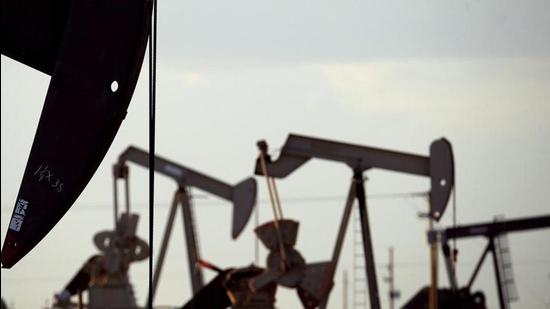Developed countries fail to meet pre-2020 climate commitments: report
All developed countries together emitted 25 gigatons of CO2 equivalent (GtCO2eq) more than their estimated emission allowances in the 2008-2020 period, a Council on Energy, Environment and Water (CEEW) report released on Wednesday said
Most developed countries, including members of the G7 forum, collectively reduced greenhouse gas (GHG) emissions by only 3.7% by 2019 over the 1990 levels, a Council on Energy, Environment and Water (CEEW) report released on Wednesday said. This is far short of their commitments made under the Doha Amendment to the Kyoto Protocol. All developed countries together emitted 25 gigatons of CO2 equivalent (GtCO2eq) more than their estimated emission allowances in the 2008-2020 period, the report said.

“CEEW’s analysis of developed nations’ pre-2020 climate actions have significant implications for the fate of post-2020 negotiations. Many developed countries have consumed disproportionate shares of the global carbon budget because they did not meet their commitments in the pre-2020 period. Trust in their long-term commitments will be regained only if their near-term actions free up carbon space for others. Further, the cost of mitigation efforts is set to increase significantly in the coming decade. While all countries must consider raising ambition, the burden of unmet promises and disproportionate use of carbon space cannot fall on developing countries,” said Arunabha Ghosh, CEO, CEEW, in a statement.
CEEW conducted a review of mitigation measures by all developed countries vis-a-vis their overall commitment under the Kyoto Protocol and the Doha Amendment. The report also presented a ranking of 43 developed countries based on their climate actions and mitigation efforts made in the pre-2020 period. Sweden, the UK, Belgium, and Denmark topped this ranking. But the US, Canada, Australia, and Russia featured in the bottom half.
While nationally determined contributions (NDCs) under the Paris Agreement are essential for achieving the 1.5 degrees C global warming target, it is equally important to study the outcomes of the emission reduction pledges made by developed countries before the Paris Agreement, in the pre-2020 climate regime, the report said. It added that the fate of post-2020 negotiations for climate crisis crucially hinges upon the achievements, gaps, and issues recognised in the pre-2020 period.
“The developing countries have concerns of bearing the burden of tackling the mitigation gaps from the pre-2020 period in the future. Furthermore, it has caused a further fissure between the developed and developing country groupings, contributing to mistrust on the next set of ambitions that were tabled in the negotiations,” the report said.
Both Kyoto Protocol and the Doha amendment quantified emission reduction targets to developed countries, based on their 1990 emission levels. Under the Kyoto Protocol, an emission reduction target of 5% based on 1990 levels, was set to be achieved by developed countries in the first commitment period (2008–2012). Under the Doha Amendment, an emission reduction target of at least 18% would be met by developed countries in the second commitment period (2013–2020).
Major economies like the US, Canada, Russia, and Japan did not participate in either one or both commitment periods. US non-participation in both commitment periods had several adverse effects on global climate action, including the withdrawal of other developed countries from critical agreements, the report said.
The greenhouse gas emissions from all Annex I Parties (both industrialised and economies in transition [EIT] countries) declined by about 14.8% in 2019 compared to their base year emissions levels. This reduction when considering non-EIT Annex I Parties (majorly comprising industrialised countries) was only 3.7% by 2019 compared to their base year emissions levels.
A fact sheet by the Centre for Science and Environment (CSE) on “Status of the Country Commitments on the road to COP 26” highlighted that the NDC Synthesis Report 1 published in February 2021 by the United Nations Framework Convention on Climate Change (UNFCCC) found that the world in 2030, as per the current level of country commitments/NDCs, will have 0.7% lower total greenhouse gas emissions than when it started its negotiations for a climate change agreement in 1990. A look at the pledges and emissions of the top emitters reveals a large gap between ambition, and the transformative short-term actions needed to decarbonise their economies and limit global temperature rise. “The two largest emitters, the US and China, are not definitively on track to achieve their 2030 targets and continue the unrestrained production and use of fossil fuels,” CSE said. “India is mostly on track to achieve its 2030 goals and has a minimal contribution when considering the size of its population.”
“The implementation phase of the Paris Agreement began in 2021. The world needs the UNFCCC and its Paris Agreement to succeed. For this, there has to be trust and confidence in the multilateral process. Thus, it is important to recall and review what were the promises made in the pre-2020 period and whether those were delivered. A clear and unbiased assessment of the pre-2020 commitments and mitigation as well as finance is the need of the hour,” said Richa Sharma, additional secretary, Union environment ministry, at the launch of the CEEW report.
Get Current Updates on India News, Ram Navami Live Updates , Lok Sabha Election 2024 live, Elections 2024, Election 2024 Date along with Latest News and Top Headlines from India and around the world.



